Intricately carved Rampuria Havelis in Old Bikaner, Rajasthan || A symbol of the wealth and luxurious lifestyles of the rich Rampuria merchants since the 15th Century
Rampuria havelis are a group of 15th century opulent havelis that stand out in the labyrinthine roads of old Bikaner. While these havelis are symbols of wealth and luxurious lifestyles of rich merchants of Bikaner, they are surrounded by the comparatively modest homes of the middle class business people.
While in the other lanes you find people riding practical vehicles such as scooties or three-wheelers at max, here the situation is different. In fact this is also that part of the old Bikaner where you can find large SUVs parked in narrow streets and you find yourself wondering 'how the hell did these get here?"
Related Blogpost - Danke ki Chot, Bikaner, Rajasthan || The perfect place for authentic, tasty, reasonable vegetarian Rajasthani food
The first of these havelis is rumored to have been initiated in the 1400s by the wealthy Rampuria merchants. They hired Balujee Chalva to construct palatial and stately homes for their families. The instructions were to spare no expense and use the best possible material and hire the most talented artisans.
Related Blogpost - Exploring Old Bikaner on Foot || A soulful city in Rajasthan that is comfortable in its own skin
In fact, Rampuria havelis have been referred to as "the pride of Bikaner" by prominent English writer and philosopher Aldous Huxley. And one can see why. Even the exteriors of the havelis are intricately embellished with detailed carvings. One can't even imagine how beautiful the interiors would have been in their day.
Related Blogpost - Driving around the drivable parts of Bikaner, Rajasthan || Wide, clean roads with easy, laidback traffic
The havelis have been constructed by the Dulmera red sandstone and are an amalgamation of Mughal, Victorian, and Rajputana architecture. The intricate work on the stones, the jharokhas, latticework, and the terraces make for a striking presence in these streets.
Related Blogpost - The intriguing Junagarh Fort, Bikaner, Rajasthan || One of the very few forts in India that is built on plains and remained largely safe from conquests
However, many of the intricately carved crevices had been overtaken by pigeons, so we really had to watch out where we stood to click pictures. We almost got splattered a couple of times.
Related Blogpost - Hotel Jaswant Bhawan, Bikaner || Well located near Old town, reasonably priced, clean and comfortable hotel with comfortable parking for cars of all sizes
Nonetheless, the structures, some of which are several centuries old, all seem to be in good shape, which is quite remarkable. I am sure good amount of money is being spent in the upkeep.
Related Blogpost - Laxmangarh in Rajasthan || An interesting stop between Indian capital Delhi & Bikaner with a lot of historical attractions to explore
Also on doing further research, we found out that even though this group of havelis is collectively known as Rampuria Havelis, each of the individual havelis have individual names. In fact the Rampurias have largely abandoned the havelis and settled abroad and the havelis are now being used by the caretakers' descendents and their families as their living quarters. So then the question remains, who is paying for the upkeep of the havelis?
Related Blogpost - Why Bikaneri Bhujia can only be manufactured in Bikaner || The story of this legendary snack that has earned itself a geographical tag
We spent quite some time walking around, clicking pictures, but we couldn't find one that was open for public viewing. Several articles on the Internet mention how most of these havelis are open and one can just walk in. One has apparently also been converted to a hotel as well. But to us, all doors appeared locked.
Related Blogpost - Johda or an old bath pool near the Beehad in Fatehpur on Agra-Bikaner Highway in Rajasthan, India || A great spot to stretch your legs and click a few photographs
We asked some locals as well and they confirmed that one could go inside the havelis and they also gave us some directions. We followed these directions into a tiny lane, where a very unimposing door seemed to lead to the insides of one of the havelis.
Related Blogpost - City of Lakes, Udaipur - One of the most popular tourist destinations in Rajasthan and top places to explore in the city
We did step in, but while in the verandah, we could hear resident families chatting and going about their regular evening routines. We did not see anyone and it felt awkward to knock and intrude into their personal space, so we gave up and stepped out again.
Related Blogpost - Chittor Fort - Largest fort of India, a UNESCO World Heritage Site with great architecture of Mewar Dynasty and must visit place around Udaipur city of Royal Rajasthan
One of the havelis, known as Bhanwar Niwas, has been converted into a 3-star hotel. This haveli was commissioned by Bhanwarlalji Rampuria, heir to a real estate and textile fortune. The construction was completed in 1927. The haveli offers a mix of traditional architecture and modern amenities.
Bhanwar Niwas is also a certified Heritage-protected monument by the Archaeological Survey of India (ASI). However, if you want to stay at this heritage property, be prepared to shell out around 10K (INR) a night. Suites and the rooms seem interesting and there are concepts like traditional High Tea that is served with local delicacies as well as some western desserts. So it may be worth staying for one night maybe.
Anyhow, we walked about quite a bit and then decided that we were thirsty and hungry and needed some nourishment. It had been a long day. We had been on the road since 4am in the morning and had driven and walked a lot. So we bought a bottle of coke from a nearby store (not the healthiest choice, I know) and started searching for a place where we could grab some meal.
That is when we discovered "Danke ki Chot" - which turned out to be the perfect place for an early and tasty dinner.


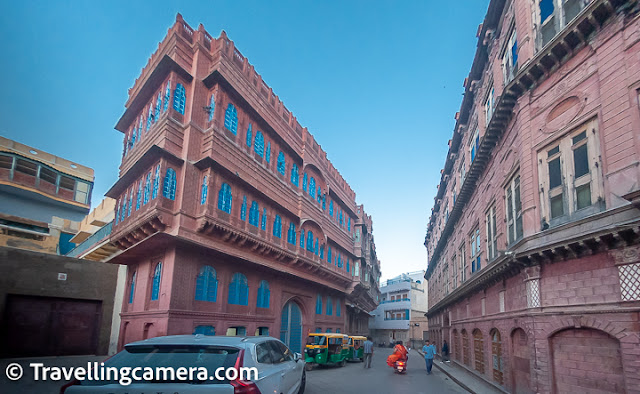
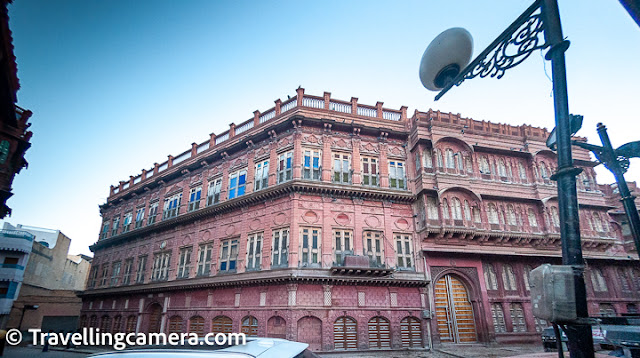

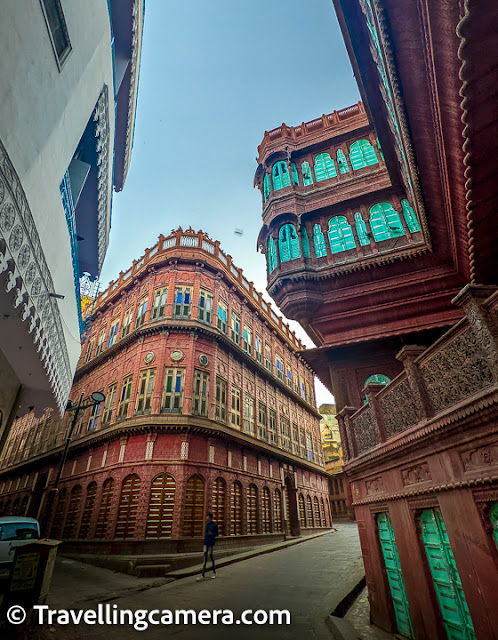


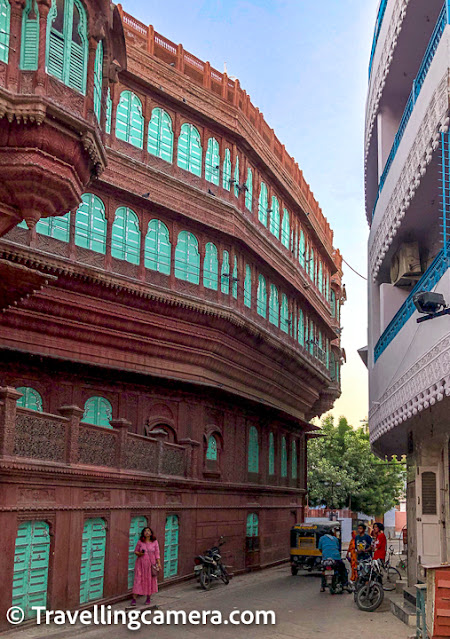
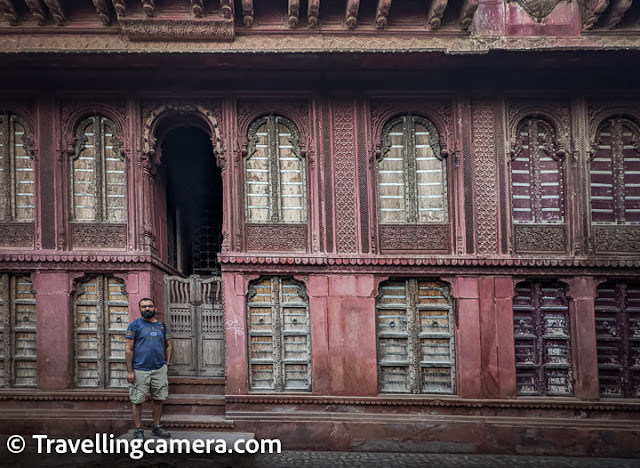

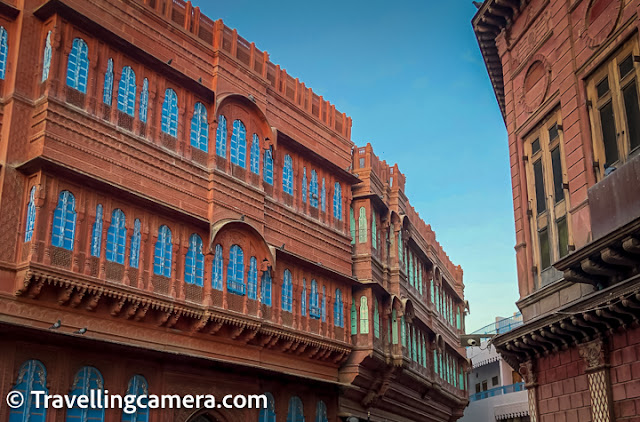

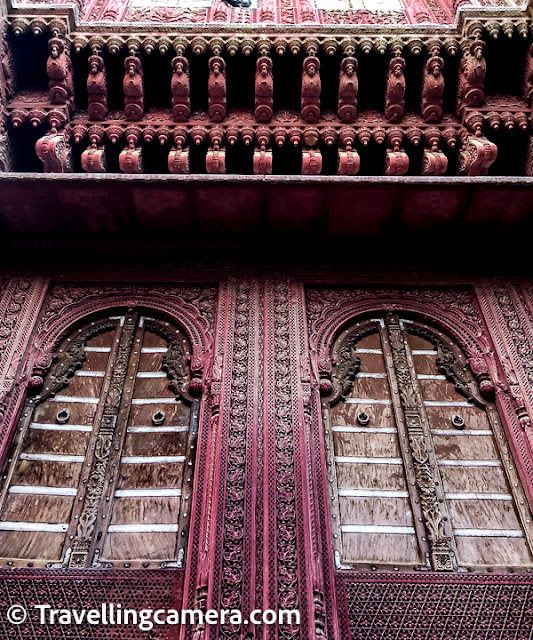

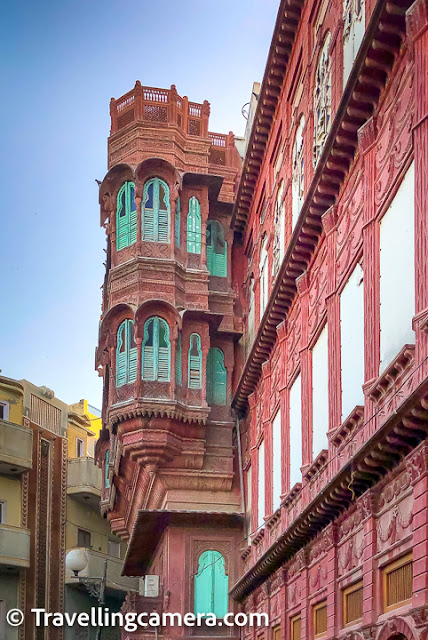

.jpg)
Comments